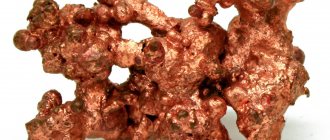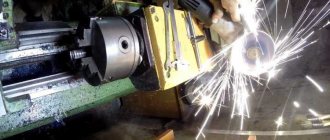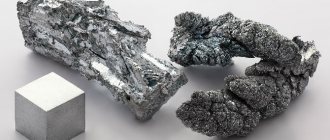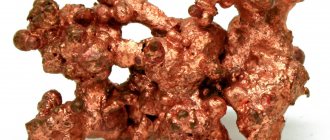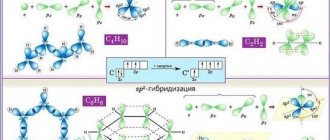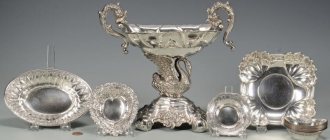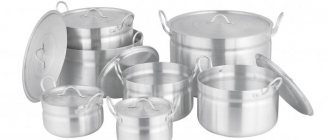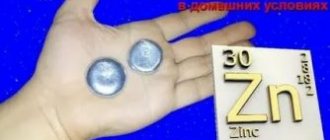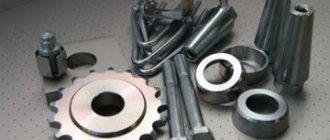Stainless steel roofing, a very effective fight against colds, technology for storing electricity inside a battery, and a number of other applications. All this is zinc - a chemical element, of course, far from the values of platinum or gold, not as spectacular as silver or copper, nevertheless, quite attractive and popular. The bluish-white metal ranks 24th in abundance among the 92 elements of the earth's crust. However, to extract 65 grams of metal, it will be necessary to process at least one ton of rock in the zone of deposits of this chemical element.
Natural formation and final formation
Like many other metals, zinc does not occur in nature in its pure form. Typically, this chemical element is present in minerals, combined with other elements, and is present as:
- oxide,
- silicate,
- carbonate.
We can say this is a traditional zinc component. Therefore, in order to reproduce pure metal, you will have to resort to processing the raw material of the zinc-containing mineral, a procedure that involves a multi-stage purification process (including several separate physical and chemical steps).
A naturally occurring mineral containing a high percentage of a chemical, widely used for a variety of purposes. The structure of the mineral resembles quartz formations with characteristic glitter inclusions. For example, to process zinc sulfide, it is necessary to grind the raw material into powder and rinse thoroughly to get rid of sulfides of other metals present as impurities. The end result is zinc oxide (ZnO). Leaching (reaction with sulfuric acid) produces a sulfate solution.
Electrolysis (an electrochemical process) is then used to separate the pure chemical element. It is also permissible to reproduce metal from mineral raw materials by smelting (heating with carbon), which is traditionally used in the industrial sector.
Dynamics of zinc prices, forecast for 2018
Since the beginning of the year, there has been a general negative dynamics in zinc prices. If in February 2021, per ton of metal was $3,577.25, then as of May 18, the London Metal Exchange (LME) set the zinc rate at $3,096.50.
Where to invest money
In 2021, zinc had the status of the most profitable and suitable metal for investment. In 2021, there was a trend towards a decrease in the investment attractiveness of this element. At the same time, most analysts believe that zinc will remain the leader among non-ferrous metals in 2021.
Deutsche Bank gives a forecast for zinc, which assumes an increase in the price of the metal by 8%. In the coming months, the cost of a ton of metal is predicted to be between $3,120-3,160.
Properties, features, characteristics of zinc
If you visually examine a piece of zinc, the external appearance of the metal will most likely appear grayish-white in color. However, this is exactly what the oxide looks like, which is formed as a result of the reaction of pure metal with oxygen and carbon dioxide in a humid environment. The appearance of pure zinc is slightly different:
- brilliant,
- bluish,
- whitish,
- silver.
This metal is not like iron, primarily due to its pronounced fragility. However, you just need to heat the metal to a temperature of 100–150°C, after which the structure acquires flexible properties and is easy to process.
Thanks to heating, the material can be converted into various shapes and even rolled into thin sheets. Like other metals, zinc is a crystalline solid. Zinc atoms combine into hexagonal, densely packed crystals.
The galvanization process is used quite widely in the national economy for processing a wide variety of metal structures in order to protect them from the negative influence of the environment. Most of the extracted chemical element is used for galvanization. The galvanization process is based on electrolysis, which involves coating iron (steel) with a thin protective layer of zinc.
Under the influence of ambient air (oxygen and carbon dioxide), the clean coating oxidizes with the subsequent formation of zinc carbonate. In this way, the factor of rusting (corrosion) of metals in a humid environment is prevented.
Galvanizing methods
Today, there are different technologies for applying zinc to the surface of products. It is necessary to consider each of them in detail.
Hot galvanizing method
The metal product is degreased, washed and etched in advance. Zinc is melted at a temperature of 450–480 °C. The part is lowered into the liquid metal. The operating principle of this method is based on the fact that iron and its alloys are well wetted. As a result, a coating of significant thickness from 40 to 450 microns is formed, due to which the product is reliably protected from corrosion. However, the hot method also has disadvantages. These include:
- uneven layer thickness;
- it is impossible to use the method for parts with precise tolerances, and in cases where the characteristics of the fastener change under the influence of high temperature.
There is also a possibility that after hot-dip galvanizing, the strength of the fastening will decrease, the so-called embrittlement. To avoid such a situation, the product must be thermally treated after applying zinc, but even this does not provide a complete guarantee. The method under consideration is not suitable for parts coated with paints or powder paints. The reason is the low adhesion between them and hot zinc.
Hot zinc surface treatment
Cold galvanizing method
This method has 2 more names: galvanic and electrolytic. In this case, the technology resembles the process of dyeing a product, but instead of paints, a special composition containing zinc is used. As a result, the part is coated with an anti-corrosion layer. Unlike the previous method, fasteners of any size and painted products can be cold galvanized. Using this method, increased chemical resistance is achieved. The weak points of the method include the small thickness of the layer - 5–35 microns, which leads to a decrease in anti-corrosion properties. The method under consideration, like the previous one, does not exclude the occurrence of embrittlement.
Thermal diffusion galvanizing method
The coating obtained using this method is a positive electrode, while the steel is negative. This is how electrochemical protection occurs. Thermal diffusion galvanizing can only be used for products whose materials are carbon steel, cast iron and low-impurity steel. The galvanizing process occurs as follows. The surface of the product is saturated with zinc, and the medium should be powder and the temperature should be 290–450 °C. The steel grade and product type affect the choice of temperature. In this way, you can achieve any thickness of the protective layer from 6 to 110 microns. With this method, a part is placed in a closed container and a special saturated mixture is added. Final treatment is required to ensure that white corrosion products do not form on the products when they come into contact with salt water and condensate.
The described technology is applicable to workpieces with threads and complex geometric shapes. As a result, a uniform layer is formed over the entire surface; zinc does not accumulate in recesses or joints. Thanks to this advantage, there is no need to remove the coating on the internal threaded part, as is necessary after hot-dip galvanizing. There is also no embrittlement, meaning this technology is suitable for high-strength fasteners. The level of anti-corrosion resistance is 1.5–2 times higher than with galvanic galvanizing, and 3–5 times higher than with the hot method. Also, this technology is characterized by high adhesion of the zinc layer to paints and high accuracy, so the scope of application also extends to structures with precise tolerances. The applied anti-corrosion layer is very wear-resistant and therefore suitable for parts that are frequently assembled and disassembled.
Production and use of pure metal
Many types of everyday household items are galvanized. For example:
- metal roofs of buildings,
- building gutters,
- water tanks, etc.
A fairly large proportion of zinc is used in the designs of disposable zinc-carbon non-rechargeable batteries. The brass manufacturing process also requires significant amounts of this substance.
A characteristic feature of zinc is the formation of a number of useful compounds:
- Sulfide (phosphor of old TV screens, oscilloscopes, fluorescent lamps and luminous paints);
- Sulfate (weed protectants, use in textile production);
- Oxide (used to make rubber, helps improve the properties of plastics, paints, inks, concrete, cosmetics).
Many well-known alloys are formed on the zinc component. For example, brass, dental amalgam, bronze and some types of solders. Galvanizing not only prevents water tanks from rusting. Almost all types of cough and cold medicines, vitamin tablets and supplements cannot do without this substance.
Common dietary supplement tablets (capsules) include calcium supplements for strong teeth and bones, vitamin C, omega-3 for the eyes, and zinc for strengthening the immune system. Zinc deficiency in the body is accompanied by various problems in relation to the health of the body, leading to development diseases. True, this problem is mainly typical for developing countries, where there are factors of malnutrition in the population and a lack of balanced healthy nutrition.
Physico-chemical characteristics
When exposed to air, the shiny metal becomes coated with an oxide film. Due to this chemical property it looks dull.
| Properties of the atom | |
| Name, symbol, number | Zinc / Zincum (Zn), 30 |
| Atomic mass (molar mass) | 65.38(2) a. e.m. (g/mol) |
| Electronic configuration | [Ar] 3d10 4s2 |
| Atomic radius | 138 pm |
| Chemical properties | |
| Covalent radius | 125 pm |
| Ion radius | (+2e) 74 pm |
| Electronegativity | 1.65 (Pauling scale) |
| Electrode potential | -0.76 V |
| Oxidation states | 0; +2 |
| Ionization energy (first electron) | 905.8(9.39) kJ/mol (eV) |
| Thermodynamic properties of a simple substance | |
| Density (at normal conditions) | 7.133 g/cm³ |
| Melting temperature | 419.6 °C |
| Boiling temperature | 906.2 °C |
| Ud. heat of fusion | 7.28 kJ/mol |
| Ud. heat of vaporization | 114.8 kJ/mol |
| Molar heat capacity | 25.4 J/(K mol) |
| Molar volume | 9.2 cm³/mol |
| Crystal lattice of a simple substance | |
| Lattice structure | hexagonal |
| Lattice parameters | a=2.6648 c=4.9468 Å |
| c/a ratio | 1,856 |
| Debye temperature | 234K |
| Other characteristics | |
| Thermal conductivity | (300 K) 116 W/(m K) |
| CAS number | 7440-66-6 |
Interaction with metals begins at 450°C.
The main disadvantage of the metal : the increase in fragility by several times from a small amount of impurities.
When bending a zinc plate, you can hear a cracking sound. It is generated by the lattice structure.
Zinc - history of appearance and status of the element
It is not known exactly who, where and when zinc was first discovered. However, archaeologists have discovered zinc alloys in places dating back to prehistoric times. It is reliably known that the ancient Romans produced copper coins, the composition of which included this substance, although with impurities.
Almost a thousand years passed before people began to use zinc as a metal itself. Historians suggest that metal production was first noted in India in the 13th century. Another 300 years later, zinc production began on a large scale in China.
The modern history of the beginning of zinc production dates back to the middle of the 18th century. The first to develop and patent a process for the production of pure zinc was the English metallurgist William Champion in 1737. Production on a huge industrial scale was carried out by smelting calamine with charcoal.
Meanwhile, the substance was finally recognized as a chemical element in 1746, thanks to the efforts of a German chemist named Andreas Sigismund Marggraff. The German scientist used methods similar to those used by Champion to study the zinc in detail within the walls of the laboratory.
Other uses of zinc
In addition to galvanizing, zinc has other industrial applications, including due to its significant density, which is the reason for some of the mechanical properties of the metal.
Other uses of zinc
It is worth considering the most common areas of use:
- Production of zinc sheets. To produce such sheets, metal rolling is used, for which the plasticity of the material is important. For zinc it depends on temperature. At 25 °C in cast form, the ductility of the metal is limited, and deformations can occur only in 1 plane, which creates different properties of the material depending on the direction. The strength of zinc in this case is greater in the direction perpendicular to rolling. When the temperature drops to sub-zero, the plasticity decreases significantly, and when heated it increases. At 100–150 °C, zinc can be rolled into sheets whose thickness reaches hundredths of a millimeter. They are marked depending on the mass fraction of zinc in the sheet. Ts0 assumes the presence of zinc at least 99.975%, Ts1 – 99.95%, Ts2 – 98.7%, Ts3 – 97.5%. Subsequently, the sheets are used to make large elements for aviation and automotive devices, forms for printing in the printing industry, chemical power sources, galvanized dishes, roofing coverings, pipes, and gutters.
- Production of zinc alloys. In order to improve the mechanical, technological and physical properties of the metal, impurities are added to it. Zinc is most often alloyed with aluminum or copper. Such alloys are melted in special industrial furnaces. First, the furnace is heated to a temperature of 400 ° C, then waste remelting, alloys of several components and zinc are placed in it, then all this is covered with well-calcined charcoal. Alloys (ligatures) contain aluminum and copper, or aluminum and magnesium, or copper and aluminum. After everything has melted, stir and, if necessary, add more zinc to the oven. The melting process must take place at a temperature no higher than 480 °C. After complete melting of the metals, mixing and pouring into molds again takes place, maintaining a temperature in the range of 400–460 °C. The resulting alloys are used for the manufacture of bearings and bushings for metalworking machines, presses, in instrument making and shipbuilding, and the engineering industry.
Zinc and alloys based on it are widely used in various industries. This is due to the properties of the material, which are the result of high density and anti-corrosion resistance.
Being in nature
The most common zinc mineral is sphalerite, or zinc blende. The main component of the mineral is zinc sulfide ZnS, and various impurities give this substance all kinds of colors. Apparently, this is why the mineral is called blende. Zinc blende is considered the primary mineral from which other minerals of element No. 30 were formed: smithsonite ZnCO3, zincite ZnO, calamine 2ZnO · SiO2 · H2O. In Altai you can often find striped “chipmunk” ore - a mixture of zinc blende and brown spar. From a distance, a piece of such ore really looks like a hidden striped animal.
